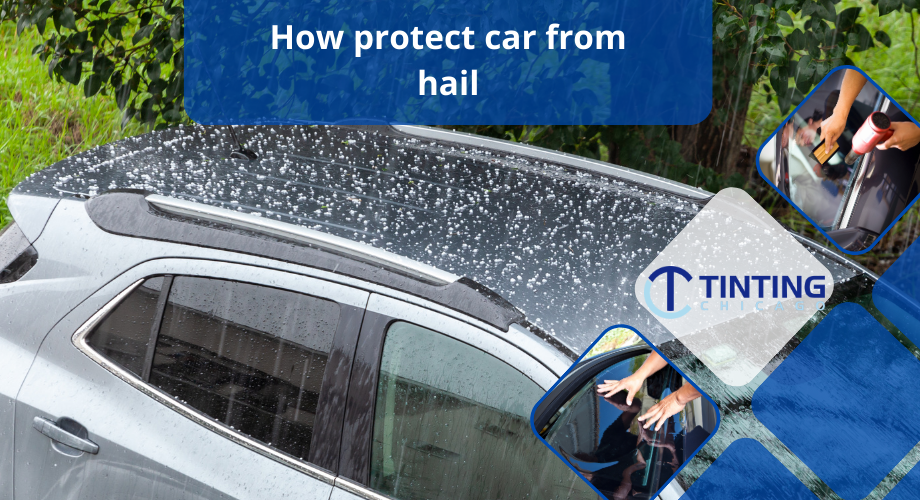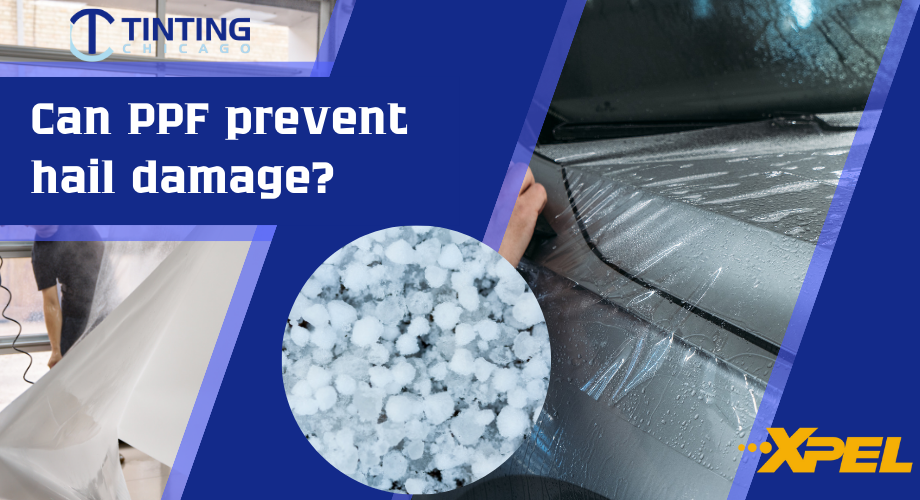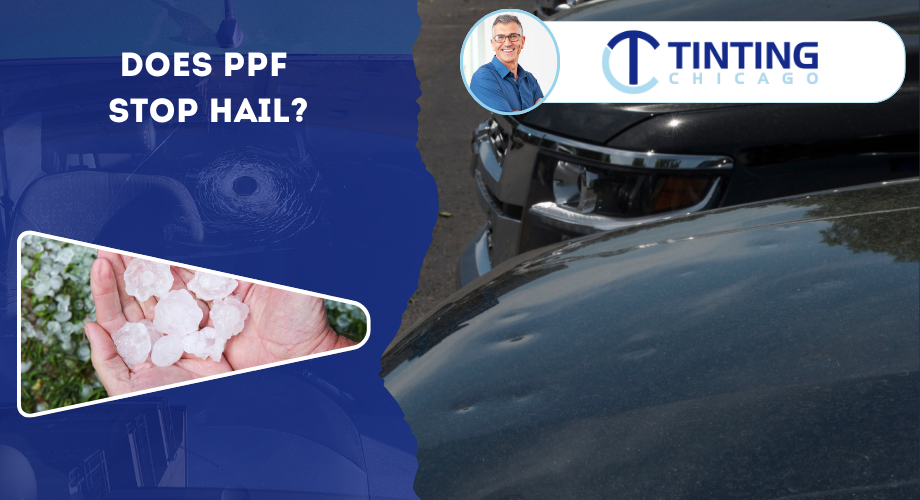


































































































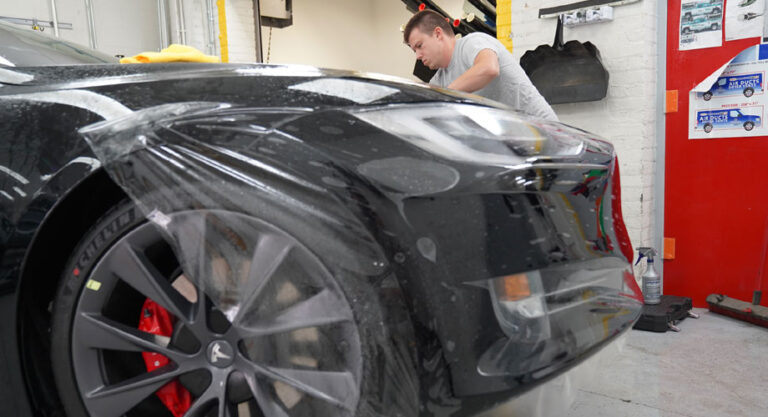
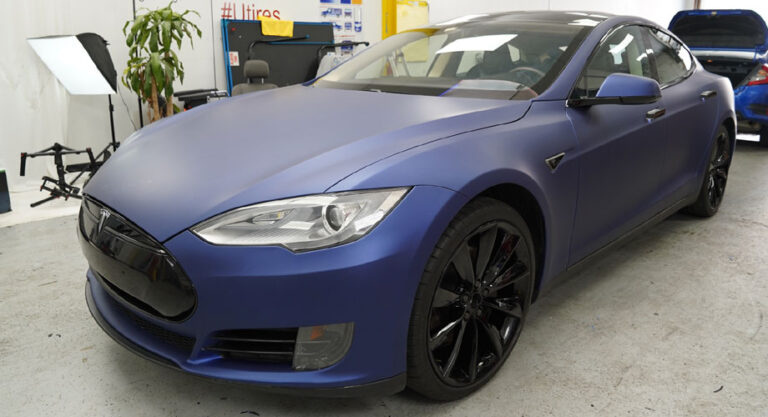

















































































































Imagine your immaculate car suddenly turned into a mess by a hailstorm. This is a nightmare for many drivers. However, this scenario is absolutely possible in the US – just in 2023, there were over 6,900 hail events across the US. You can imagine the scale of the loss! Hail leaves dents and shatters windows, and owners face steep repair bills. The global climate is changing, and hailstorms are becoming more frequent and severe. So, is it possible to prevent their ruining outcomes and how? Yes! We have prepared some practical tips on how you can shield your vehicle from hail and keep it safe in any weather.

Hail damage – why is it dangerous for your vehicle?
What’s actually hail? It is formed during strong thunderstorms. Water droplets get high into the atmosphere and freeze there. Plus, they can grow as they collide with other ice particles. Eventually, they become heavy enough to fall back to the ground and strike everything on their way.
It’s clear that big icy stones can be disastrous. Small hailstones usually cause light scratches or tiny dents, but larger ones leave serious damage, break windows, and even harm the car’s structure. The effect is often devastating—hail damage lowers a vehicle’s resale value, compromises its safety, and leads to expensive repairs. You should not wait for the worst to happen. There are a lot of preventive measures you can take to avoid unnecessary stress and costs!
How can you protect your car from hail?
There are several simple strategies that will help you survive through weather storms without negative consequences.
A reliable parking
A garage is one of the best defenses against hail. Indoor parking shields your car from hail. It also protects it well from heavy rain, snow, or extreme heat. It preserves your car’s paint, prevents rust, and keeps it in good condition. If you don’t have a garage, there are still ways to protect your vehicle. Covered parking spaces, like carports, provide decent shelter from hail. Parking under large, sturdy trees can help, too, but note that falling branches can cause more harm than hail itself.
A car cover
Car covers are an affordable and effective solution. You can look for a simple soft cover for basic protection or get a padded one with an extra layer against hail. Choose a durable and waterproof cover. It must breathe as trapped moisture may damage your paint. Also, choose a cover that fits your car well to prevent movement during windy conditions.
A portable shelter
Temporary shelters offer quick and flexible protection during storms. These are foldable garages or pop-up canopies. These are easy to set up and take down and are a great option for those without permanent structures. Choose sturdy, wind-resistant designs for better durability.
PPF – how it helps in hail protection
Paint Protection Film (PPF) is a special clear film applied to a car’s exterior. It covers the car’s surface like a glove and protects the paint from daily wear and tear and damage, including hail. PPF cannot completely prevent dents from large hailstones; however, it effectively reduces the impact and acts well against smaller hail. How does PPF work:
- Absorbs hail hits. PPF acts like a cushion, absorbing the force of hailstones and reducing dents or paint chips.
- Prevents scratches. If a hailstone pierces the film, it will not leave deep scratches.
- Self-heals over time. Many PPFs can repair minor scratches on their own, using heat or time, so the film stays clear and smooth.
Things to consider before choosing PPF
There are several things you should know before you invest in paint protection film:
- Cost. PPF installation costs range from $2,000 to $8,000. It depends on your car’s size, the quality of the film you choose, and the areas covered. While this is a significant upfront cost, it can save money on repaints or repairs after hailstorms. Besides, PPF is a great solution against everyday wear and tear – it strongly works against rocks, debris and other routine damage you cannot avoid while driving.
- Installation quality. You will get the most out of PPF if it is applied by professional installers. Experts know how to apply the film smoothly without bubbles, wrinkles, or gaps. Once you have decided in favor of PPF, choose a reputable workshop where they use prime materials and offer warranties for their services.
- PPF is a complete hail solution. PPF offers excellent protection for hail up to a certain size but won’t prevent damage from severe storms. So, you will need to think about additional protection methods, like hail-resistant car covers or covered parking.
our latest news!
What can you do if a hailstorm catches your car – emergency tips
Sometimes, a hailstorm hits when you least expect it, and your car is left exposed. Here’s how you can minimize the damage in an emergency:
Look for the nearest shelter. If you are caught in a storm, try to find cover immediately. Look for a nearby garage, parking structure, or sturdy overhang. Any form of shelter can make a big difference in protecting your car from hail damage.
Improvise protection. When shelter is not an option, use whatever you have on hand to cover your car. You may use blankets, towels, or even floor mats. These can help absorb some of the impact and protect your car’s surface from serious damage.
Think about your safety. If you are driving during a hailstorm, keep away from trees, poles, or anything that might fall. Stay inside the car until the storm passes to avoid personal injury.
Document damage and report it. Once the storm clears, inspect your car for damage. Take photos of any dents, broken glass, or scratches. These will be useful if you need to file an insurance claim. Report the damage to your insurance provider as soon as possible.
Think about car insurance to cover hail damage
Sometimes, hail damage to your car is unavoidable. That’s why having car insurance is so important. Good car insurance usually covers storm-related issues. The cost of your policy may depend on how at-risk your car is for weather damage. If hail does cause damage, you’ll need to pay an excess fee before repairs begin. Hail damage can range from small fixes to cases where the car is no longer usable. Luckily, most hail damage is repairable, and insurance can help you get your car back to normal.
Before you buy a policy, let your insurer know if your car already has hail damage. This ensures you are properly covered. Always read the details of your policy to avoid surprises.
Does ceramic coating prevent hail damage?
Ceramic coating is usually used to protect the car’s paint from minor scratches and elements. However, it offers minimal protection against hail. You cannot fully rely on ceramic coating if you want to prevent hail damage.
Does paint protection protect against hail?
Paint protection film (PPF) can significantly reduce the impact of hail on your car’s paint. It absorbs some of the impact energy and minimizes dents and scratches. Moreover, high-quality film self-heals small damage over time.
Why PPF is essential for Chicago’s weather conditions?
Chicago often sees hailstorms. PPF must become a part of your protective strategy if you want to avoid hail damage. This film also preserves your car’s paint and increases its resale value.
Do any car covers protect against hail?
You can purchase special padded car covers that will protect the vehicle from hail impact. However, they may not completely prevent dents from larger hailstones.
How to protect your car from hail without a garage?
Without a garage, you can park under a carport or use a car cover for protection. Also, get a portable shelter – it will keep your car safe during a hailstorm.





























 Send a message
Send a message Send a message
Send a message